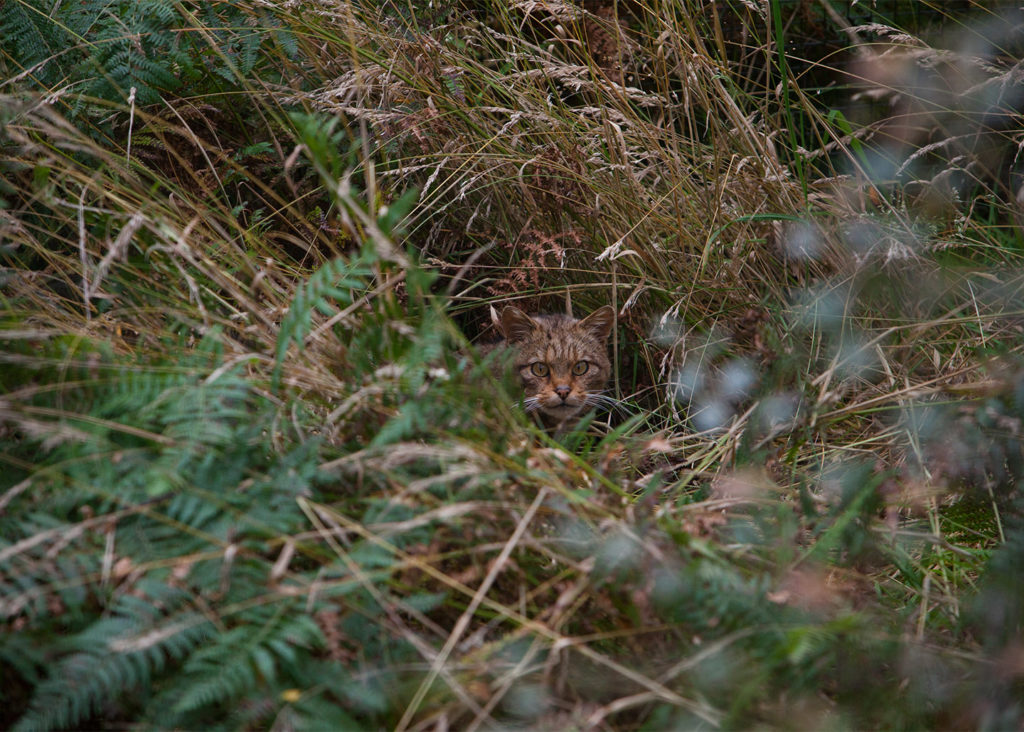Through the FIRNS initiative, TENT is working on a new blueprint for investment into nature recovery.

Scotland’s wildcats are an immensely important, regionally iconic species. Wildcats were once widespread across Great Britain, but became restricted to the north-western Highlands in the late 19th century. After a recovery in the first half of the 20th century, the population has declined drastically in recent decades. Wildcats were historically seen as threats to sporting estates, and so were persecuted over the decades. Through direct persecution, accidental killings, habitat loss and hybridisation with domestic cats, the Scottish wildcat has become ‘functionally extinct’ in the wild.,
A report published in 2019 by the International Union for Conservation of Nature’s Cat Specialist Group concluded there is no longer a viable wildcat population living wild in Scotland, with hybridisation with domestic cats the recent, major threat to their survival. This means the extinction of the species is highly likely without carefully carried out wildcat releases.

The European wildcat (Felis silvestris) is a separate species to the domestic cat (Felis catus). Wildcats are similar in size to a domestic cat., Their habitat preference is a mosaic of mixed forests and grassland habitats, and their preferred prey is rabbit, when available.
Image: Max Milligan
Led by the Royal Zoological Society of Scotland (RZSS), the Saving Wildcats partnership is working to restore Scotland’s critically endangered wildcat population by breeding and releasing them into the Cairngorms Connect landscape. The project’s wildcat conservation breeding for release centre is the first of its kind in the UK and follows other similar dedicated endangered species breeding centres including Iberian lynx and European mink.
NatureScot has now approved a licence application from the Saving Wildcats partnership to release wildcats in the Cairngorms Connect area of Cairngorms National Park later this year.
At The European Nature Trust, we’ve been long-term supporters and funders of this work. Our friends at Alladale Wilderness Reserve are one of many sites playing an essential role in building the captive-bred population – a necessary part of building genetic resilience and ensuring a ‘pipeline’ of wildcats for eventual wild release. The cats being released were born in the Saving Wildcats conservation breeding for release centre, based in Highland Wildlife Park, in 2021. All the cats have now been moved into large, natural pre-release enclosures that have been designed to help them prepare for the challenges of life in the wild.
We look forward to seeing how the cats get on in the wild, and hope to see a healthy population establishing. As with any breed-for-release programmes, there will be a vast amount of monitoring and science to understand their behaviour, habitat and prey preference, and threats after release, which will inform the next phase of the Saving Wildcats mission from 2027-2031. Let's save this precious Highland Tiger!
Through the FIRNS initiative, TENT is working on a new blueprint for investment into nature recovery.
8 international journalists tell the story of Belizean conservation
A civilised nation, killing more than 70% of its wolves, flies in the face of science.

